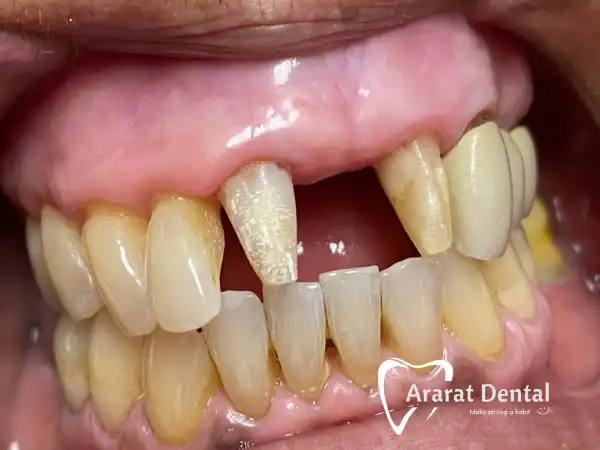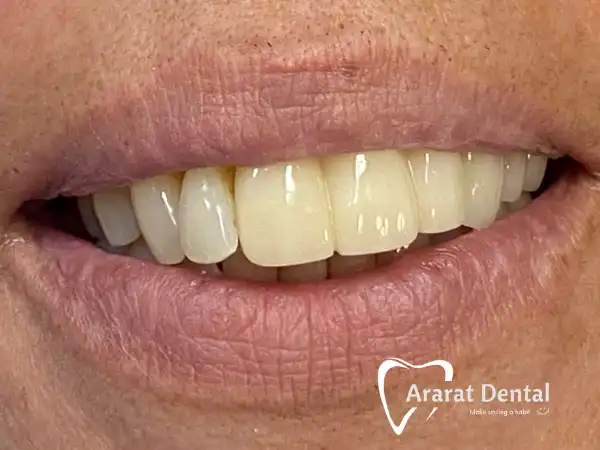A dental bridge is a false tooth that is used to fill the gap created by a missing tooth or teeth. A gap between your teeth can be potentially dangerous to your dental health, as it can cause your teeth to shift resulting in a change in your bite that could be painful. Dental bridges help alleviate this problem by using the two surrounding teeth as anchors to hold a false tooth in the place where the gap is. Typically, porcelain crowns are placed over the surrounding teeth, and the false tooth, known as a pontic, is fused between them.
Dental bridge benefits
Known as the fastest, cheapest, and most effective way to treat a dental gap, the bridge is popular all over the world. The reasons why people turn to dental bridges for replacing missing teeth include:
- The bridge treatment is open for people of all ages, provided that the neighboring teeth are in good condition.
- Natural appearance
- Smile restoration and maintains the shape of your face
- Distributes the bite force equally
- Prevent the teeth from drifting from its original position
- Less invasive than the dental implants
- As dental bridges are fixed, you need not worry about taking them out to clean
- Cost-effective and less expensive in comparison to dental implants
Addresses the speech problems.


Materials used for dental bridges
There are three types of materials used for dental bridges:
- All-porcelain bridges
- Porcelain fused to metal (gold dental bridges)
- All metal bridges
The porcelain and porcelain fused with metal dental bridges are tooth-colored bridges used to restore teeth. Porcelain dental bridges are preferred because of their aesthetic value. They look quite real and are excellent for the restoration of back and front teeth. Gold dental bridges are highly durable and assure the best fit.
As the cost and properties of these materials differ, it is important to discuss with the dentist the ideal material keeping your dental health and bridge position in mind.
Types of dental bridges
There are three types of dental bridges options:
- Traditional fixed bridge: It is the most common dental bridge type and is made of ceramic or porcelain fused to metal. This method is used where there are natural teeth on each side of the gaps.
- Cantilever bridge: It is used when there are healthy teeth only on one side of the missing teeth. This dental bridge procedure involves anchoring the artificial tooth over a single or more of the natural adjacent teeth.
- Maryland bridge: It is made of porcelain fused to metal and it is used to cover front gaps. This bridge involves artificial teeth that are fused to the metal and are cemented to the back of the natural teeth.
If you go for dental bridges, you can be sure that they will last for more than ten years if you practice good oral hygiene.

Check Out Our Amazing Transformations


3 Unit Cosmetic Porcelain Bridge
Register for Free Consultation With Dr. Anahid Youssoufian
Our Google Reviews
Dental Bridges
A dental bridge is a false tooth that is used to fill the gap created by a missing tooth or teeth. A gap between your teeth can be potentially dangerous to your dental health, as it can cause your teeth to shift resulting in a change in your bite that could be painful. Dental bridges help alleviate this problem by using the two surrounding teeth as anchors to hold a false tooth in the place where the gap is. Typically, porcelain crowns are placed over the surrounding teeth, and the false tooth, known as a pontic, is fused between them.Dental bridge benefits
Known as the fastest, cheapest, and most effective way to treat a dental gap, the bridge is popular all over the world. The reasons why people turn to dental bridges for replacing missing teeth include:- The bridge treatment is open for people of all ages, provided that the neighboring teeth are in good condition.
- Natural appearance
- Smile restoration and maintains the shape of your face
- Distributes the bite force equally
- Prevent the teeth from drifting from its original position
- Less invasive than the dental implants
- As dental bridges are fixed, you need not worry about taking them out to clean
- Cost-effective and less expensive in comparison to dental implants
Materials used for dental bridges
There are three types of materials used for dental bridges:- All-porcelain bridges
- Porcelain fused to metal (gold dental bridges)
- All metal bridges
Types of dental bridges
- Traditional fixed bridge: It is the most common dental bridge type and is made of ceramic or porcelain fused to metal. This method is used where there are natural teeth on each side of the gaps.
- Cantilever bridge: It is used when there are healthy teeth only on one side of the missing teeth. This dental bridge procedure involves anchoring the artificial tooth over a single or more of the natural adjacent teeth.
- Maryland bridge: It is made of porcelain fused to metal and it is used to cover front gaps. This bridge involves artificial teeth that are fused to the metal and are cemented to the back of the natural teeth.

